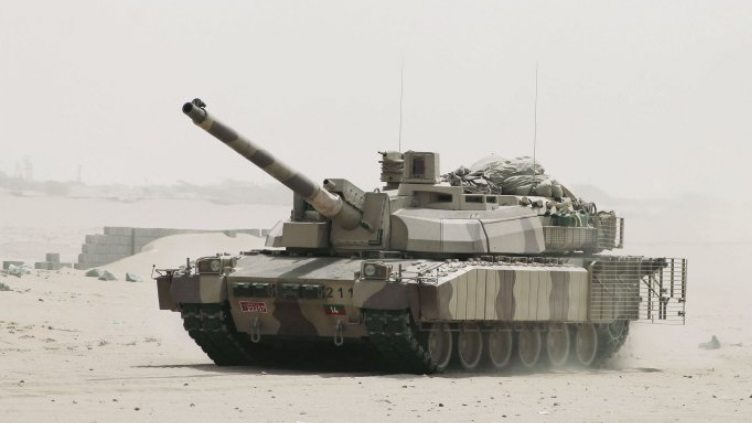Jeremy Binnie – IHS Jane’s Defence Weekly

The impasse in Yemen’s conflict appears to have been broken by the deployment of a powerful Emirati armoured formation: a logistical triumph that has helped pro-government forces push out of the southern port city of Aden and capture Al-Anad Air Base 48 km to the northwest.
The military deployment has not been announced by the government of the United Arab Emirates (UAE) or covered by the country’s media, but its scale has become increasingly apparent as more photographs and videos have emerged from southern Yemen since 12 July, when Oshkosh M-ATV mine-resistant ambush protected (MRAP) vehicles were spotted in Aden for the first time during the battle to secure the city’s airport.
The M-ATV is used by Emirati and Saudi special forces, but the vehicles in southern Yemen are crewed by men wearing civilian clothing, raising the possibility that they are Yemenis who have been trained and equipped by the Saudi-led coalition that has been bombing Yemen since late March in an attempt to reinstall President Abd Rabbuh Mansur Hadi.
By the end of July it had become apparent that the UAE had deployed regular military forces. Two BMP-3 infantry fighting vehicles were filmed by an Al-Jazeera news crew on 28 July and a Leclerc armoured recovery vehicle was photographed in Aden about the same time.
While these vehicles could potentially have been landed by the C-17 airlifters that the UAE confirmed were flying into the international airport, albeit on humanitarian rather than military missions, it subsequently became apparent that they were part of what must be an amphibious landing on a scale not seen in the Middle East since the liberation of Kuwait in 1991.
By 3 August the UAE had landed Leclerc tanks, additional BMP-3s (seemingly not carrying any infantry), at least one 155 mm G6 self-propelled howitzer, and Agrab mortar carriers. One video clip showed nine Leclercs driving out of Aden, meaning at least one tank battalion (squadron) has been landed.
Some – but not all – the Leclercs in Yemen are equipped with the AZUR urban warfare protection package. The UAE is known to have bought at least 13 AZUR kits, so the presence of Leclercs without the additional armour suggests a second battalion has been deployed to Yemen.
These tank battalions are presumably part of an armoured brigade that includes at least one battalion of BMP-3s in addition to G6 and Agrab batteries and all the associated support vehicles, including large numbers of Tatra trucks.
Photographs from Aden suggest the UAE military has used the roll-on/roll-off terminal next to the refinery at Little Aden as its main beachhead. Its navy has several tank landing craft as well as two larger 80 m amphibious warfare vessels that were almost certainly involved in the operation, the most obvious assets being the 80 m landing ships that were built by Malaysia’s Shin Yang shipyard.
It is unclear if Swift , a former US naval logistics vessel that is now operated by the UAE and visited Aden on 29 July, contributed to the amphibious operation. The UAE’s official news agency reported that a ship carrying humanitarian supplies docked in Aden that day.
Intermingled with vehicles operated by allied Yemeni forces, the Emirati armoured column moved northwards up the N1 highway towards Al-Anad Air Base on 3 August. Later that day President Hadi announced the base had been liberated. Al-Anad has been bombed heavily by the Saudi-led coalition, but once its runway is patched up, it could become a new forward operating base for the Emirati brigade and allied Yemeni forces.
After the fall of Al-Anad, pro-government forces reportedly continued to push northwards towards Taiz province, while a spokesman for UN special envoy Ould Cheikh Ahmed said on 4 August that the warring parties had shown renewed interest in a peace plan.

